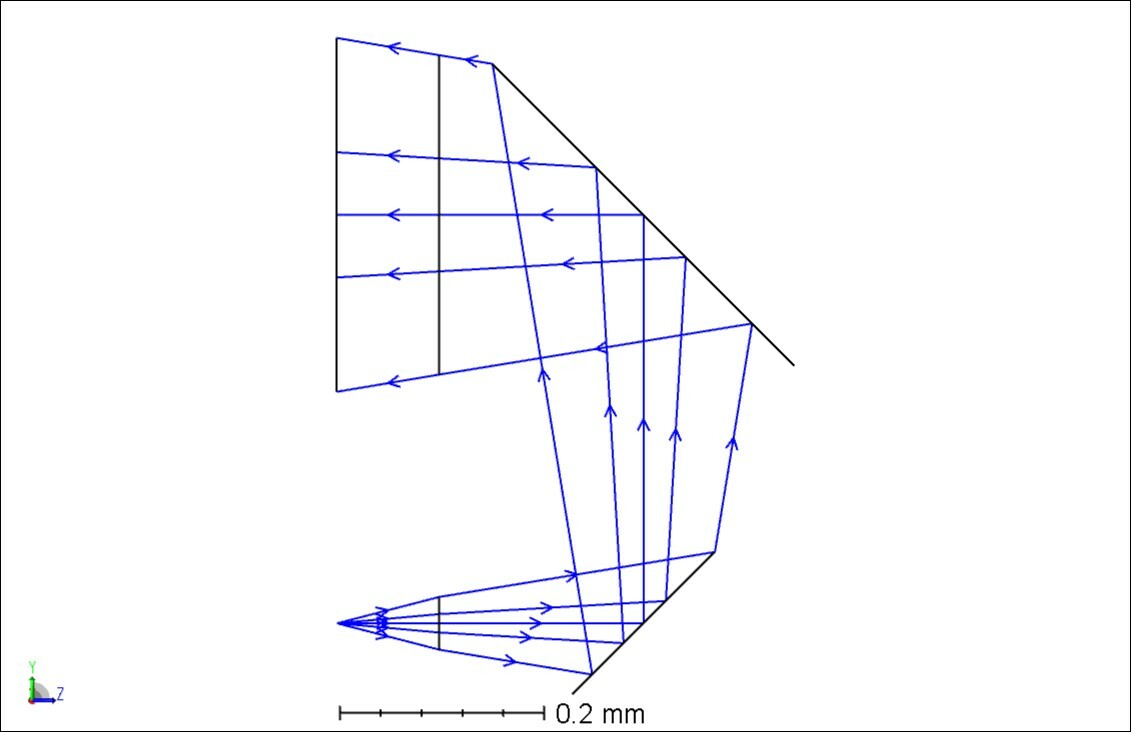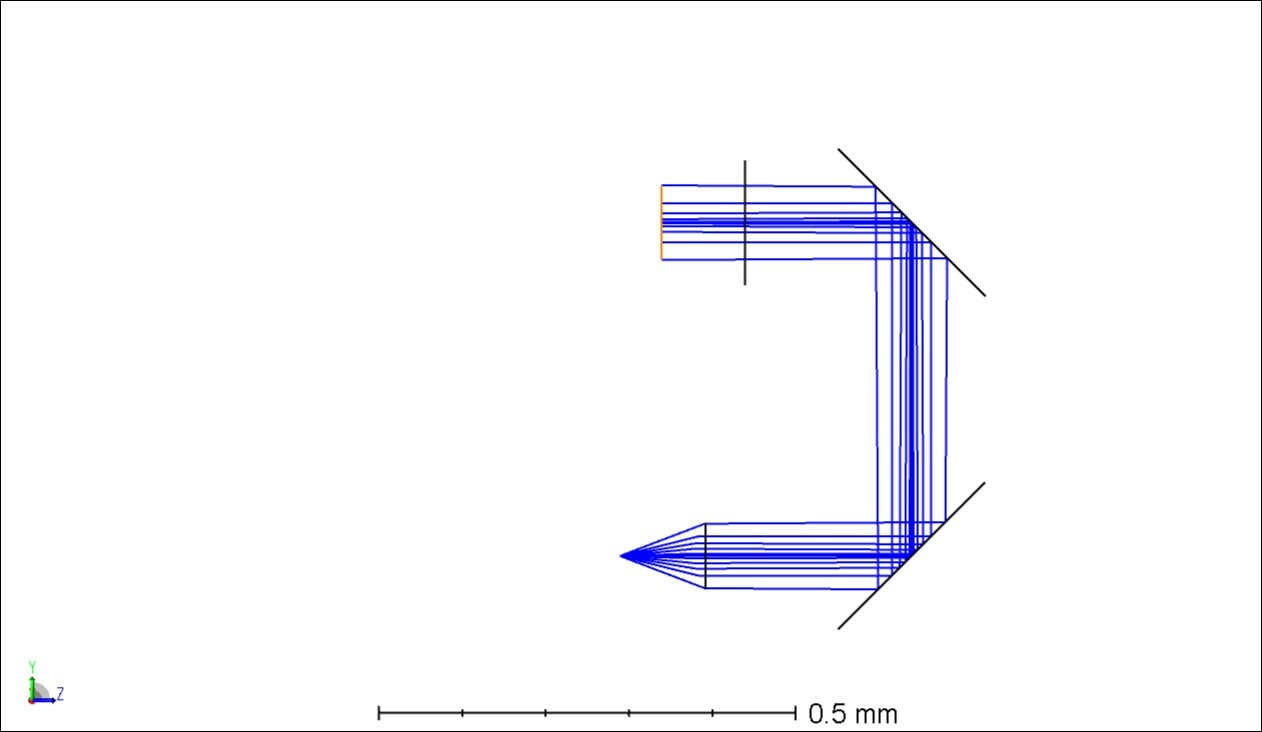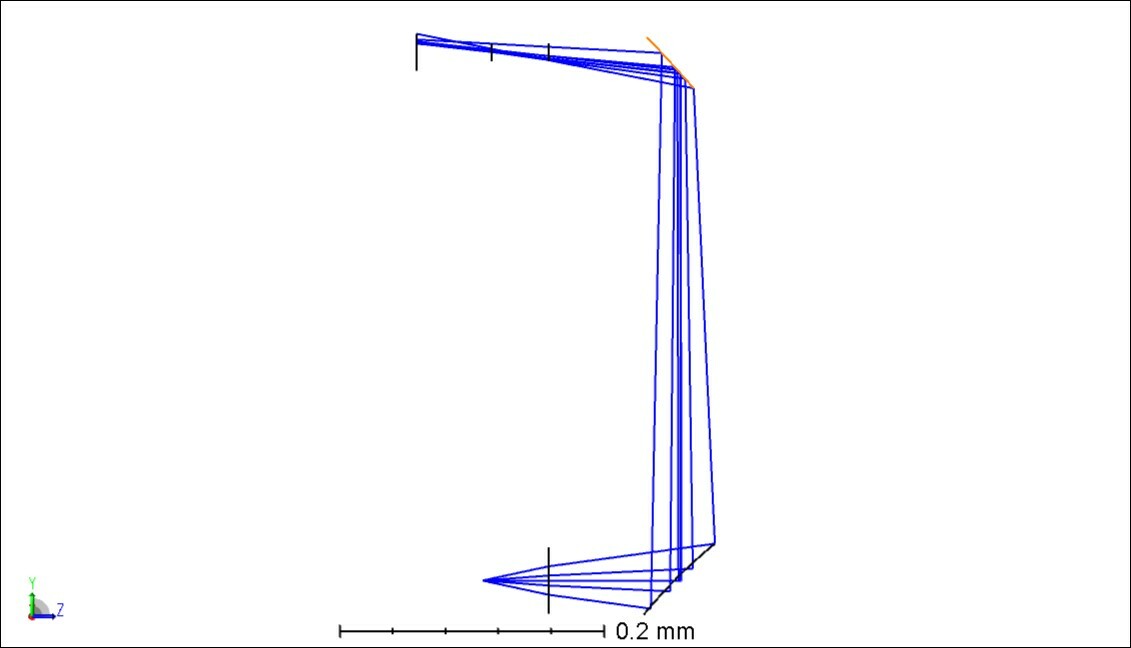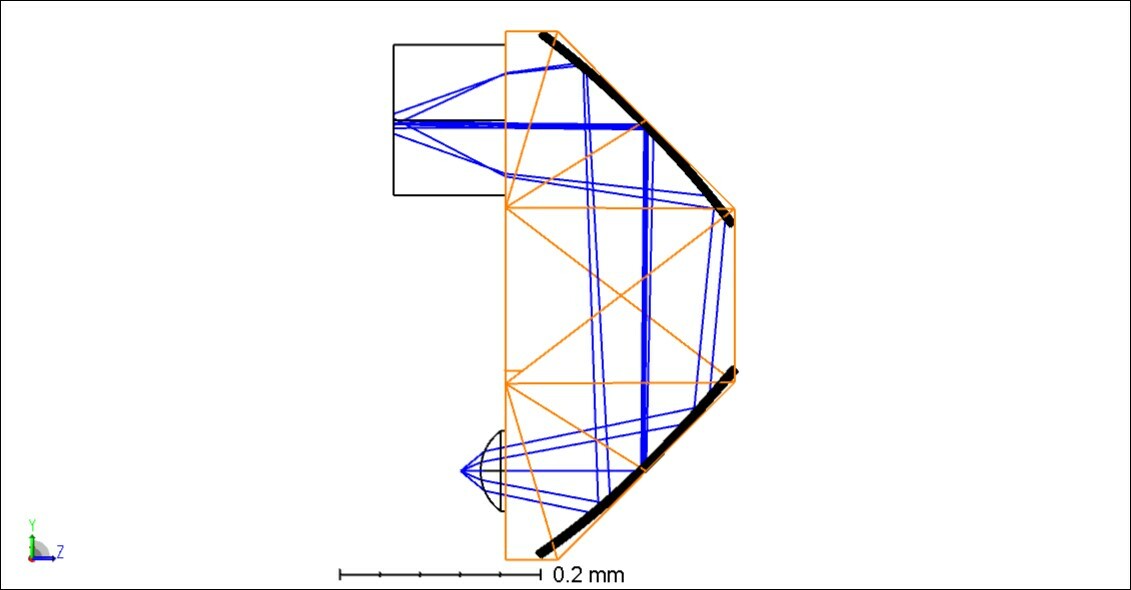Hello everybody!
I'm working with Zemax Opticstudio to design a micro-optical system which would allow me to couple efficiently a laser-diode to an optical fiber. (I'm a poorly self taught zemax user...)
Due to mechanical and spatial requirements, I'm not able to use regular lenses to perform the fiber coupling, but instead I have to use a periscope to divert my light rays from the source to the fiber.
Specifically, the periscope should receive the rays from the source (propagation along Z axis), reflect them upwards along the Y axis (+90deg fold), and then reflect them once again backwards (+90deg fold), so they'll back-propagate towards the fiber (propagation along -Z axis).
The periscope will be a single optical element, made with precision molding. Therefore the rays are emitted from the source, they travel in air and then enter the periscope (surface_1). From surface_1, they propagate in a dielectric material to the first mirror (surface_2) for a thickness_1, they get reflected upwards towards the second mirror (surface_3) for a thickness_2. Then they get reflected backwards from surface_3 to the exit of the periscope for thickness_1. After they exit the periscope the propagate in air towards the optic fiber input (see pic[1]). (All thicknesses, diameters etc are below 1mm)
Ideally the simplest system consists of the two reflecting surfaces, which I choose to be Biconic-Zernike mirror surfaces with a simple metal coat (see pic[2]).
An alternative design, would introduce an additional refractive surface at the periscope entrance to allow control of more degrees of freedom, and higher coupling efficiency (see pic[3]. here I have firstly optimized the entrance surface to colimate the rays on their way to surface_2)).
Such a system is very easily designed in Zemax Optic Studio, and the optimization should be performed without great difficulty using the POPD optimization operand, in sequential mode.
Unfortunately, my system refuses to converge to a good solution, regardless the many different approaches employed.
e.g. I've tried to use other surface types, I've changed the merit function criteria, I introduced the periscope as a non-sequential component, and more.
The system keeps refusing optimization, and more annoyingly will deflect the rays to random directions, away from the optic fiber optical axis (e.g. pic[4]).
I'd like to ask you therefore for some inputs that would allow me to move on.
Do you know of a better optimization approach for such a system?
How can I force the rays to converge towards the fiber, keeping the chief ray parallel to the fiber optical axis?
In general any suggestions/solutions would be much appreciated.
Thanks a lot!
(A few more details about the system: The aperture type is set to object space NA, at 0.25. Gausian apodisation 1. Wavelength 638nm. Ray aiming off. Refractive index in the range 1.51-1.56)







